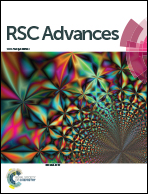Growth factor loading on aliphatic polyester scaffolds
Abstract
Cells, scaffolds and growth factors are three elements of tissue engineering. The success of tissue engineering methods relies on precise and dynamic interactions between cells, scaffolds and growth factors. Aliphatic polyester scaffolds are promising tissue engineering scaffolds that possess good mechanical properties, low immunogenicity, non-toxicity, and adjustable degradation rates. How growth factors can be loaded onto/into aliphatic polyester scaffolds and be constantly released with the required bioactivity to regulate cell growth and promote defect tissue repair and regeneration has become the main concern of tissue engineering researchers. In this review, the existing main methods of loading growth factors on aliphatic polyester scaffolds, the release behavior of loaded growth factors and their positive effects on cell, tissue repair and regeneration are introduced. Advantages and shortcomings of each method also are mentioned. It is still a great challenge to control the release of loaded growth factors at a certain time and at a concentration simulating the biological environment of native tissue.

- This article is part of the themed collection: 2021 Reviews in RSC Advances


 Please wait while we load your content...
Please wait while we load your content...